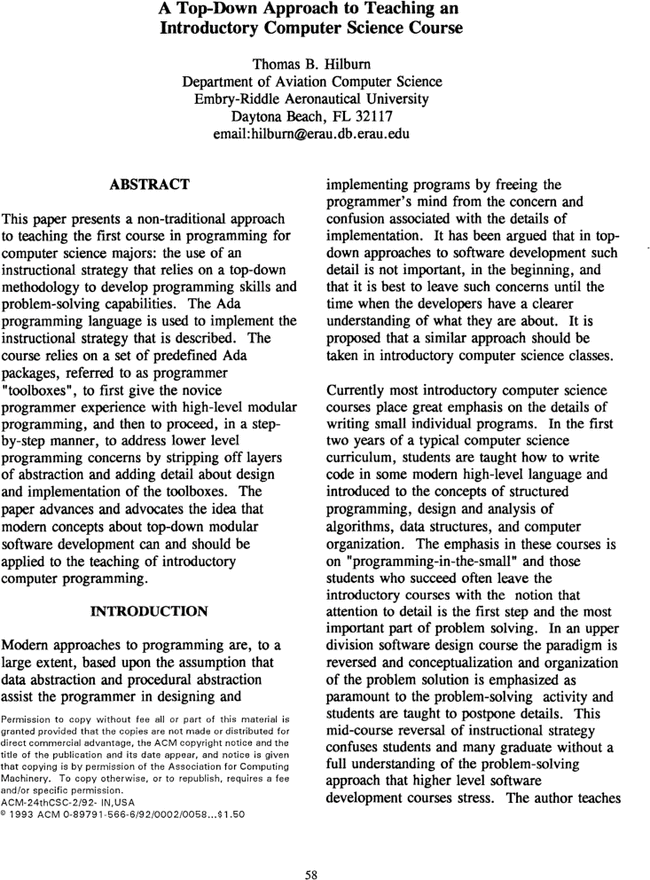Cited By
View all- Taheri SSasaki MNgetha H(2015)Evaluating the effectiveness of problem solving techniques and tools in programming2015 Science and Information Conference (SAI)10.1109/SAI.2015.7237253(928-932)Online publication date: Jul-2015
- Greyling JCilliers CCalitz A(2006)B#: The Development and Assessment of an Iconic Programming Tool for Novice Programmers2006 7th International Conference on Information Technology Based Higher Education and Training10.1109/ITHET.2006.339788(367-375)Online publication date: Jul-2006
- Angster EBergin JBöszörményi LDemeyer S(2002)Introducing OO Design and Programming with Special Emphasis on Concrete ExamplesObject-Oriented Technology ECOOP’99 Workshop Reader10.1007/3-540-46589-8_20(338-361)Online publication date: 12-Apr-2002
- Show More Cited By





